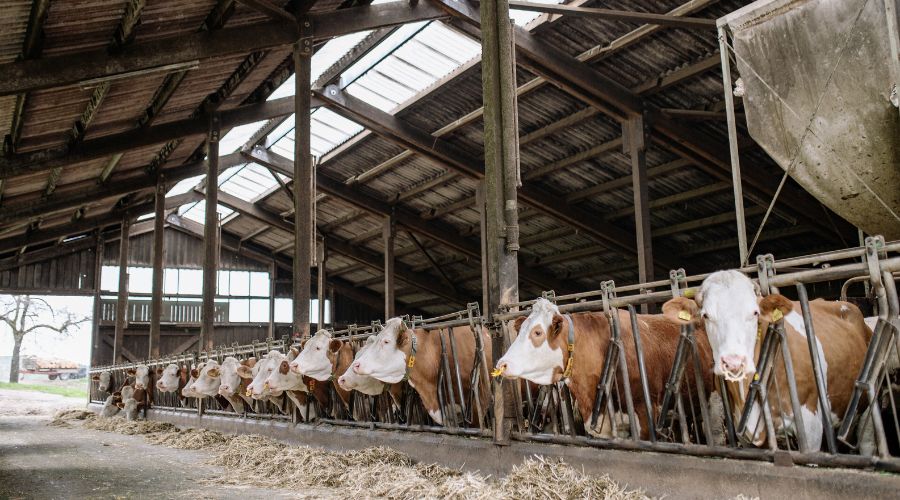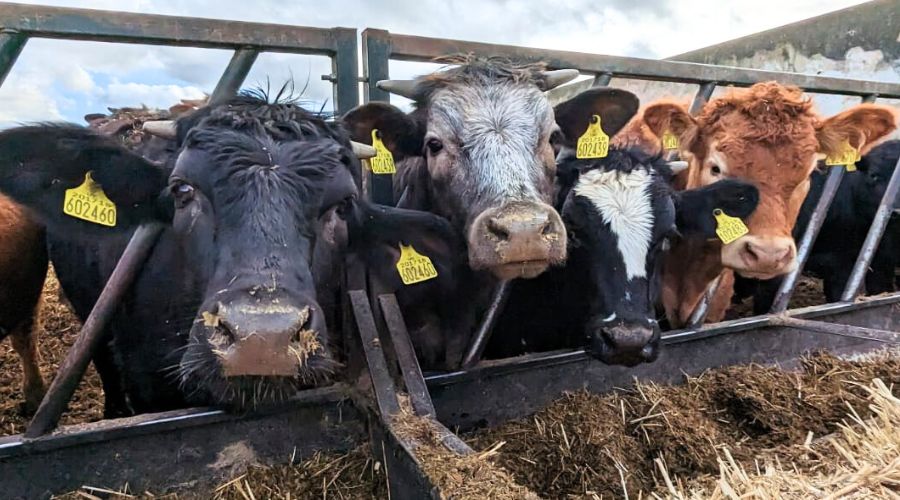Cattle housing – 3 top tips to prepare
7th September 2023
As we head into the colder months, Farmers Guide offers three top tips to prepare for housing cattle this season – from building maintenance and farm safety, to animal health and nutrition.

1. It’s time to look at building maintenance
Ahead of cattle housing is the time to ensure roofs and gutters are clean and in a good state of repair. Check that electrics are protected from the elements and that there is effective drainage and well-grooved yards. Sheds should also be power washed and disinfected prior to housing.
Check troughs are in good condition and housed cows always have access to clean, fresh water – and look at cubicle design and feed access. Lying times should be around 12 hours a day for housed cows, which is dictated by space. Low lying times can result in poor production as well as sole bruising and ulcers.
As a rule of thumb, each cow needs 10m2 overall space including beds, so consider if additional space is needed. We recommend a deep sand bedding or a good quality mat or mattress.
2. Winter diets
Look at the forages available ahead of cattle housing and get silage analysed. Experts are reporting a mixed bag of silage analysis this season, with some farms having enough high-quality forage. Other farms have very little high-quality forage, or lots of silage of lower feed value, according to Lallemand. Maize and whole-crop cereals could help to bolster rations this year.
Farms should review their forage budgets and assess what’s in the clamp versus what their forage and energy needs are for winter. Blood sampling can be done for any trace element deficiencies to highlight if supplementation is required. Those concerned about energy shortfalls can discuss how to make this up cost-effectively with their nutritionist and/or feed sales rep.
It’s also important to consider the impact of transitioning from grazed forage to high starch and protein feed on rumen health. Starting to feed housed ration outside three weeks before housing can help mitigate this.

3. Animal health ahead of cattle housing is crucial
With the stress of cattle housing, colder temperatures and proximity to other animals, livestock can be at increased risk of immunosuppression and health issues during this time – with pneumonia being a key issue. Ensure there is good ventilation and calves are kept warm and dry.
Housing is also a good time to carry out routine vaccinations and testing for worms and fluke. Other recommended activities include mobility scoring and body condition scoring while animals are already being handled.
Lameness is more prevalent in housed cows so it’s advisable to get on top of digital dermatitis before they are housed. If footbathing has been reduced during summer grazing, it’s recommended to get back into a footbathing regime two to three weeks before housing and monitor for DD.
Finally, livestock accounted for eight deaths on farms in 2022/23 and injuries often occur during handling at housing time. It’s important to ensure the correct handling equipment is available and safety protocols are followed during autumn housing. This will prevent accidents and injuries.

